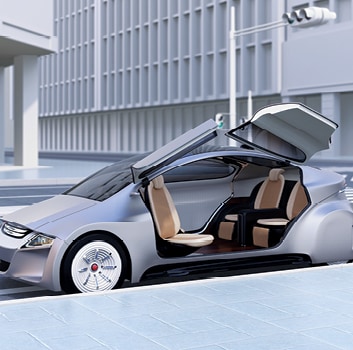There are four main barriers to adoption for consumers to fully embrace battery electric vehicles — range, infrastructure, battery degradation, and cost. Basically consumers want to know if the car will get them to where they want to go, can they plug it in when they need to recharge it, will the battery last long enough and is it cheaper than a regular gas/diesel passenger car. On most of these fronts, we find that we’re getting closer to ‘yes’, but just aren’t quite there yet.
So why are people buying battery electric vehicles at all? When we look at current demand, we find that we’re still in the early stages of EV adoption with just 1% of battery electric vehicles and plug-in hybrids making up just 1% of new car sales globally. Demand up until now has been driven primarily by ‘push’ factors such as government support through the use of taxes and incentives. Regulations on emissions are used to make electric vehicles cheaper and traditional internal combustion engines more expensive to meet emission targets.
In order for penetration of battery electric vehicles to truly increase, demand ‘pull’ factors will need to take over. Consumers need to believe that the utility of a battery electric vehicle is higher than for a conventional engine vehicle. For this to happen, the price of batteries has to come down enough so that cost parity with traditional vehicles is reached. Lower battery costs will also extend the range of battery electric vehicles and newer technologies will solve the problem of battery degradation. Finally, a network of charging stations will need to be installed to alleviate the ‘plug-in’ fear.
The timing and scale of electric vehicle adoption is open to debate and the range of estimates for penetration in 2030 is pretty wide. Our forecasts are based largely on push demand in the sense that we make no assumption around consumers actively pursuing battery electric vehicles over and above traditional vehicles. Our base case scenario is for 10% battery electric vehicle penetration by 2030 with Europe and China remaining the largest EV markets. Our bull case scenario lifts penetration to 18% in 2030 and assumes both European emissions targets will be met and China new energy vehicle targets will be reached. Our bear case at 5% penetration sees a more significant miss on both targets.
We firmly believe the future is electric. The question today, as it was in the past, remains when.
Electric Vehicles
Ready(ing) For Adoption
Electric vehicles as a concept have been around since the very beginning of auto invention. But it’s only in the past few years that the technology has caught up with the concept. Cars that can drive for long distances without a charge are starting to be produced and demand for electric vehicles has slowly started to increase but why hasn’t demand for them taken off? In the pages that follow, the authors look at where we are now in terms of battery electric vehicle adoption, where we’re likely going, and how long they think it will take for us to get there.What do you think of when you think of the ‘Car of the Future’? The first thing that springs to mind for me is from the cartoon The Jetsons where George gets into his flying car and then folds it up and puts it in his briefcase before he gets to his desk. While that might be a bit further out in the future than is reasonable, what you consistently do not see in most futuristic stories is someone stopping on the side of the road to fill up their gas tank.
Click here to view the report in full.
Subscribe to Citi GPS
Keep up to date with our latest insights.
Sign up to receive the latest news from Citi.
Select Preferences


